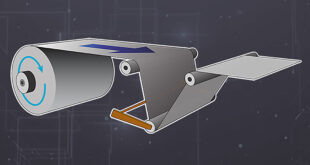When specifying electrical components, engineers are often presented with dizzying spreadsheets filled with technical datapoints, for hundreds of devices. Steve Hughes reports
Variety is the spice of life. But, as anyone who’s tried to throw a curry together without a recipe knows well, you can certainly have too much.
American author Alvin Toffler coined the term overchoice in 1970. This is the idea that an overabundance of options increases the effort it takes to make a choice.
Counterintuitively, it’s been found that more choice is detrimental, as thoroughly researching the options to pick the right one could potentially take days or even weeks.
The average person might face this issue in the supermarket when choosing a detergent among the hundreds of ostensibly similar products. For the electrical engineer, however, the problem is far more imposing and acute.
For instance, installing an underrated braking resistor in a wind turbine could have catastrophic, potentially explosive results in the event of overspeed or transmission failure.
Similarly, an overwhelmed powerline communication filter could cause devices to switch unpredictably, causing unplanned downtime, as well as requiring monitoring and maintenance in the excess.
These errors apply both ways. While not actively as dangerous as above, using overrated components is simply a waste of time, money and effort.
High power components are often less efficient, and invariably heavier and bulkier than their low power counterparts. This decreases efficiency in mobile examples, such as electric vehicles.
Somewhere, hidden between these two extremes, lies an ideal component. Yet when presented with a page full of options with complete information, electrical engineers have the unenviable task of finding it.
Demystifying this decision is the primary motivation behind REO’s product streamlining.
In lieu of providing a buffet of options and leaving buyers to fend for themselves, REO is instead now offering fewer choices, while providing more comprehensive advice and support. This more effectively supports engineers in making the correct choice, first-time.
A sum of its parts
Another aspect to consider is the current and ongoing electrical component supply chains. Numerous demands, such as the rise of the electric vehicle, have risen dramatically within a short time.
While supply has increased to meet these requirements, international tariffs and trade disputes over raw metals have further exacerbated the shortage.
The major impact this has for purchasers is to dramatically increase lead times for devices including these components. For instance, many types of capacitors have seen lead times more than double from 15 to over 30 weeks in less than three years.
This is another part of the motivation behind streamlining REO’s offerings. By reducing the sheer number and variety of devices on offer, earmarked component stockpiles can be reassigned to where they’re required.
As mentioned, variety may be the spice of life in many ways, but nobody enjoys wading through spreadsheets of mind-numbing data.
Steve Hughes is managing director of electrical component specialist REO UK.
 Engineer News Network The ultimate online news and information resource for today’s engineer
Engineer News Network The ultimate online news and information resource for today’s engineer

